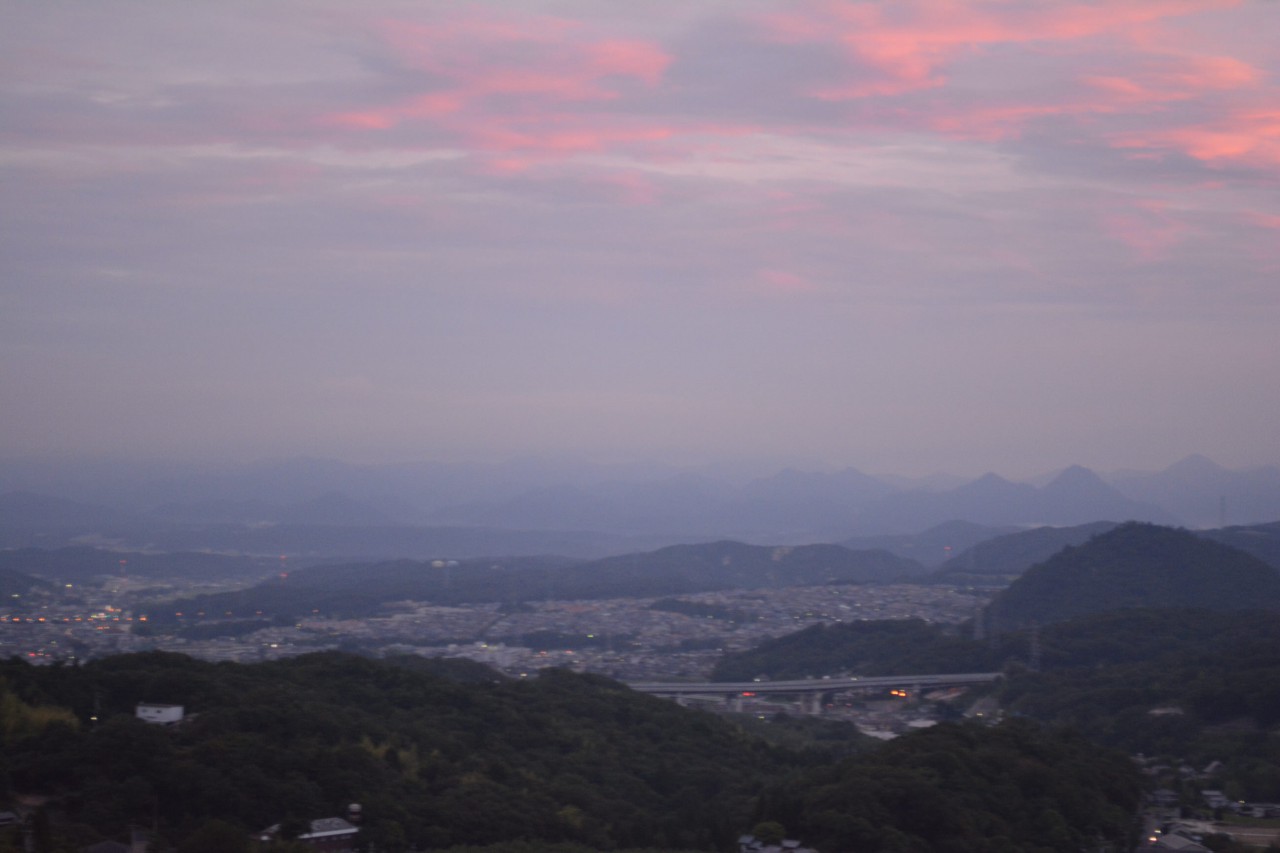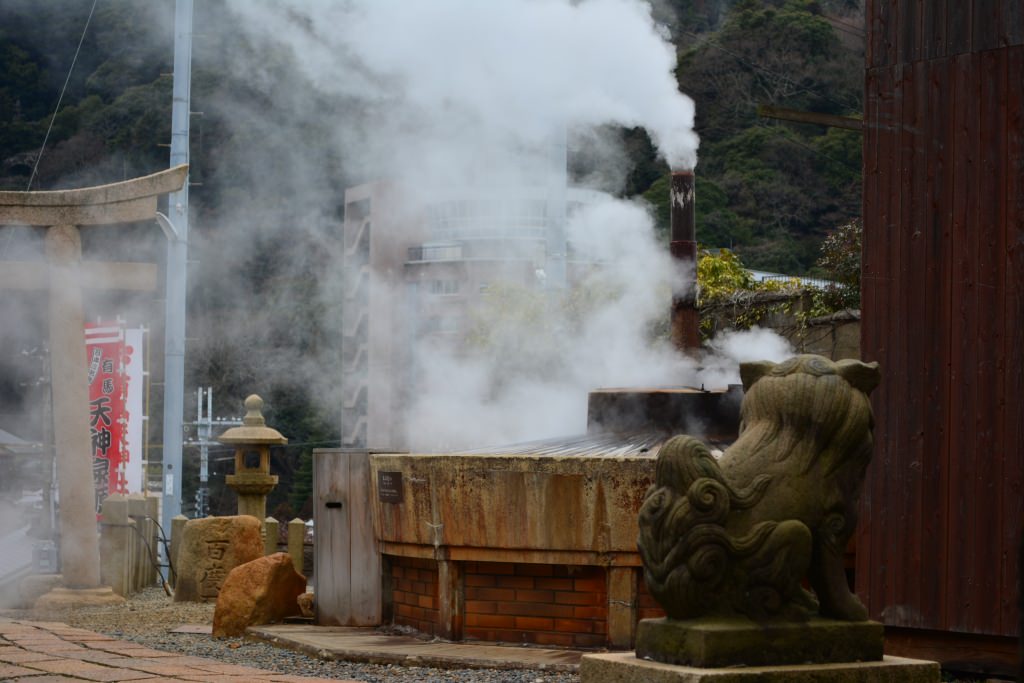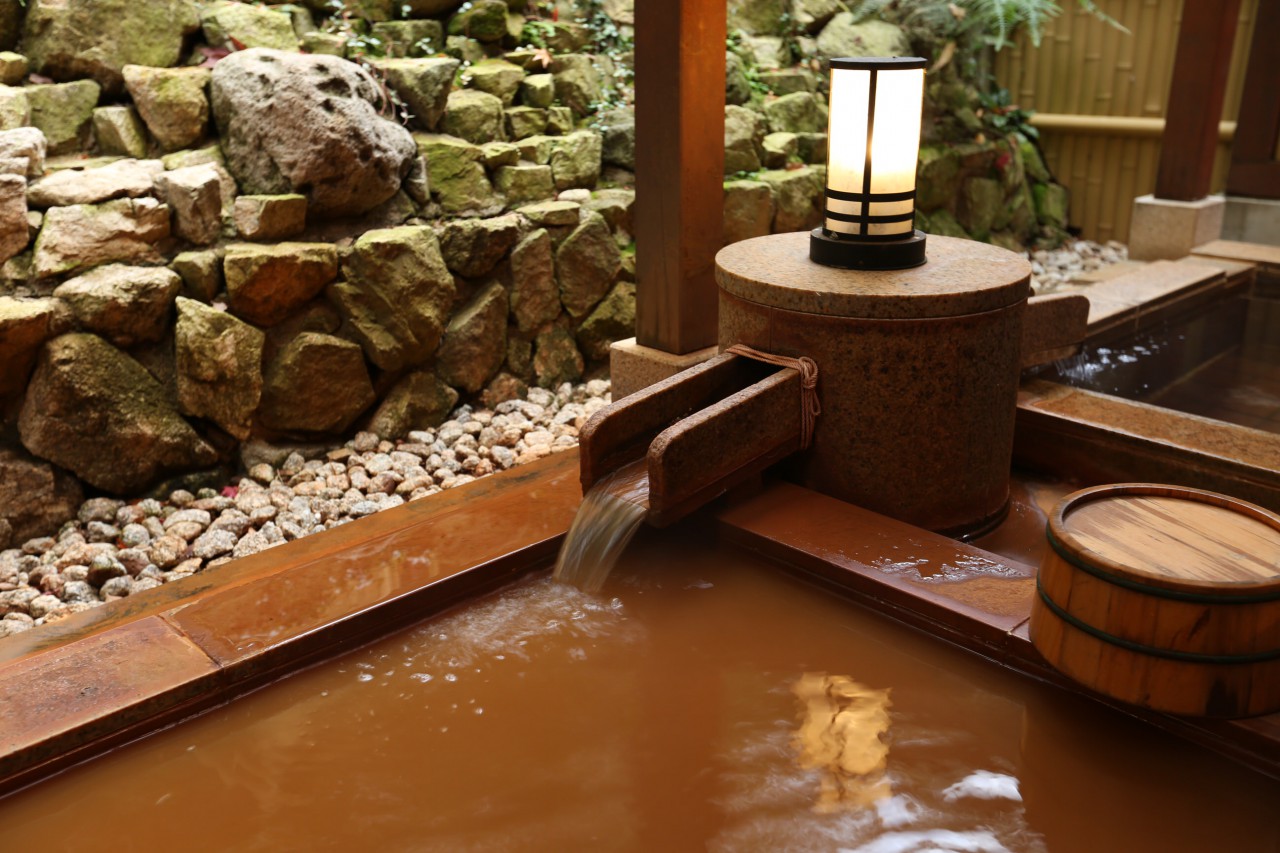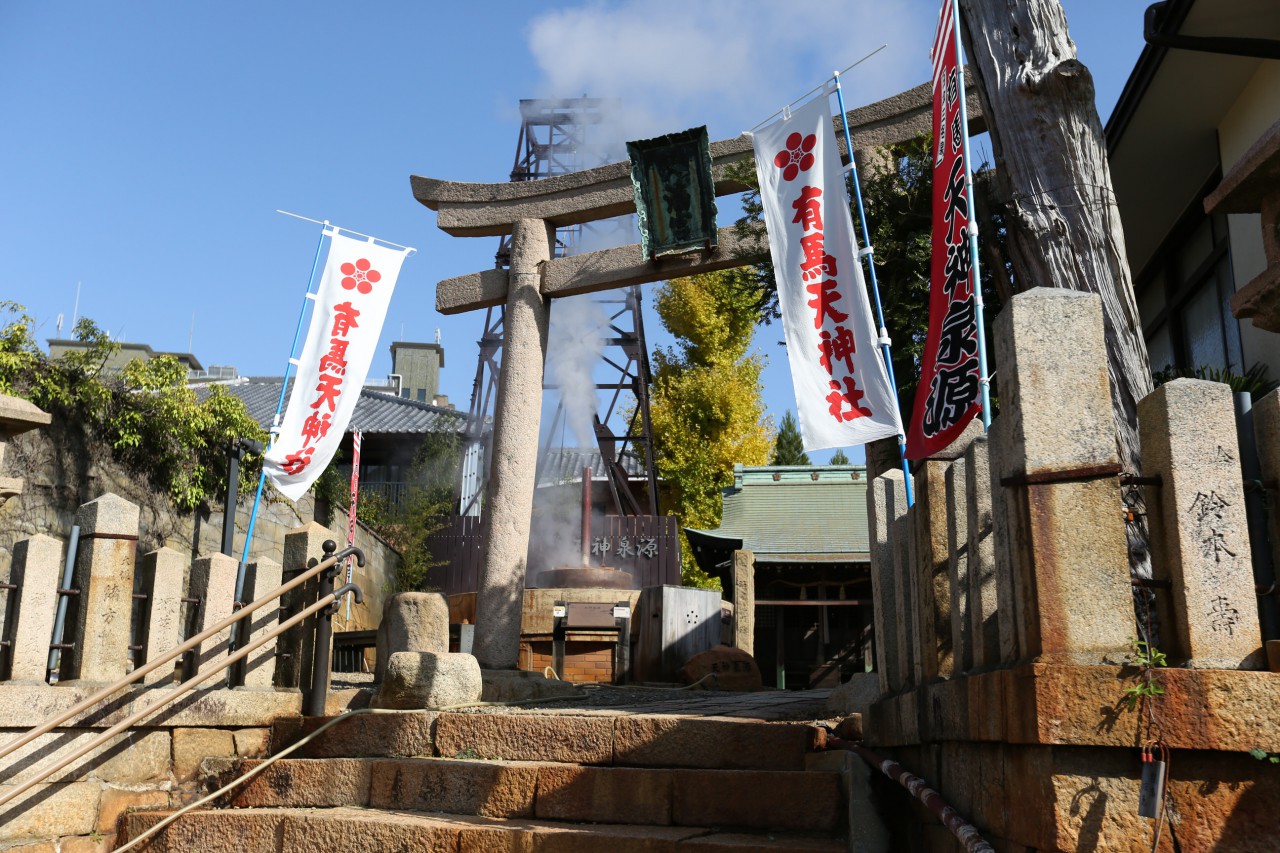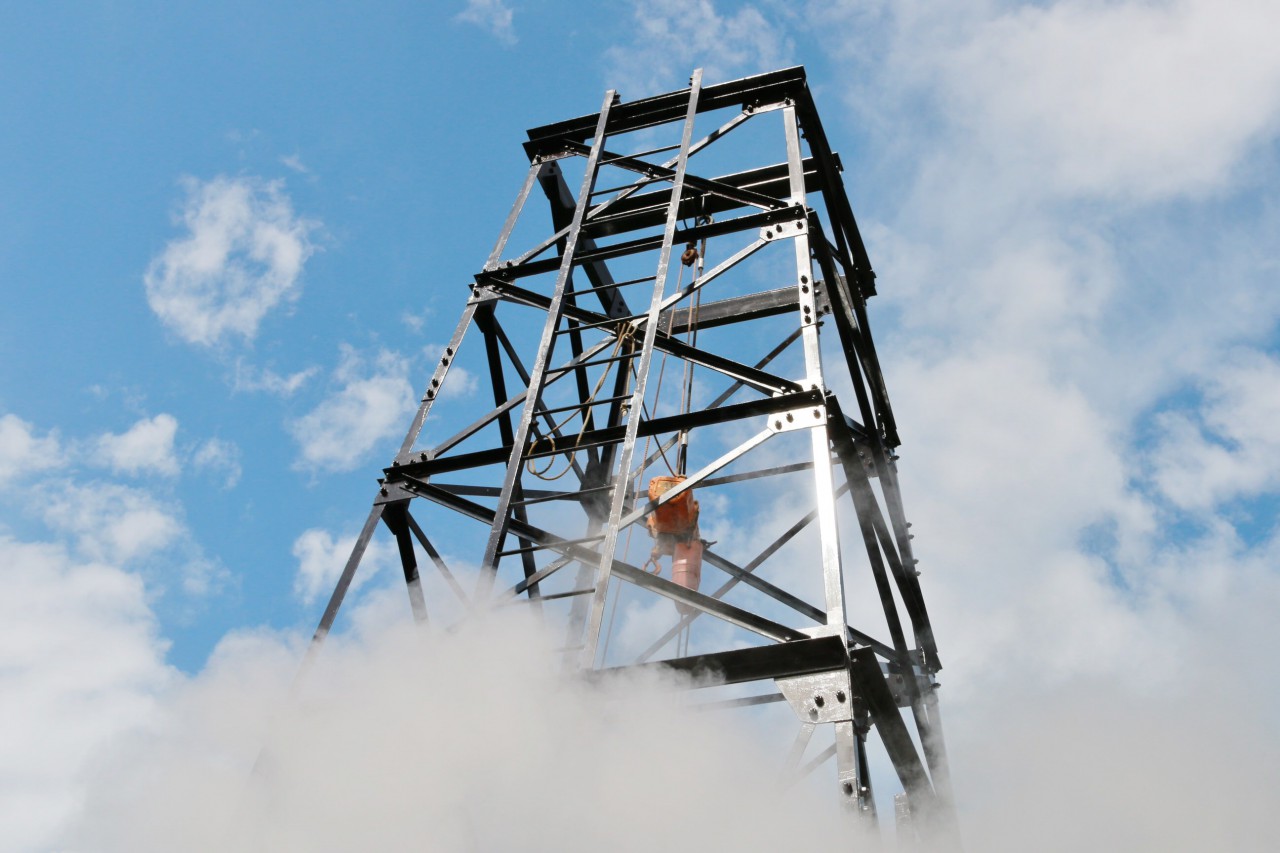Miraculous Hot Spring
Never Found All Over the World
Arima Onsen is one of the oldest and most important spa towns in Japan. Located just 30 minutes away from Kobe, in Kansai region. Arima Onsen is documented in historical books as one of the most ancient onsen in Japan, and can trace its roots as far back as 1300 years. The first known mention of Arima Onsen is from 631, and it tells of when Emperor Jomei took a bath in the hot spring. Soon after, Arima became known as the emperor’s royal onsen.
During the most prosperous period of the Edo era, it was popular for onsen to be ranked as professional sumo wrestlers were ranked. Arima Onsen had the distinction of being the highest ranked “ozeki“ in Kansai region at the time. After Kobe port opened 150 years ago, numerous foreigners loved to visit the Arima too. In modern Japan, Arima Onsen is rightly considered one of the 3 most ancient and reputable onsens.
Both Kinsen(golden hot spring)and Ginsen(silver hot spring)are a key to differentiate Arima Onsen from other onsen around Japan with most valuable quality of hot spring. According to the onsen analysis done by the Ministry of Environment of Japan, Arima Onsen has 7 out of the 9 natural components recognized for onsen curative effects. This makes it one of the very few onsen in the world to feature such an abundance of elements.
According to modern scientific analysis, there are three types of hot springs in the Arima Onsen: the Kinsen and two types of Ginsen. The Kinsen contains high levels of iron and salt. It has been proven that these elements formed on the underwater tectonic plates when the plates first took form. These elements are released with the movements of the tectonic plates. As the iron and salt contents bubble up from the ground, the interaction between the iron and the open air changes the color of the hot spring to a “golden” reddish-brown (Kin means gold in Japanese).
The salt content in the Kinsen is 1.5 to 2 times that of seawater. Although the spring water is odorless, it has an astringent metallic taste. Thanks to the high temperature of the onsen, the high iron、salt and calcium contents can surround human body and treat symptoms of chronic , like neuralgia and arthritis. The Kinsen is especially popular among women as it helps keep the skin moisturized and prevent the limbs from feeling cold.
The two types of Ginsen are a colorless carbonic spring water, and a natural and mildly radioactive radium spring water (Gin means silver in Japanese). Carbonic springs are best known for their ability to boost blood circulation and the metabolism, help with the removal of lactic waste, and eliminate edema. The colorless and odorless spring contains minute amounts of radium and releases small doses of radioactivity which is beneficial to the body, promoting cell activation, boosting the immune system, and relieving muscle aches and fatigue. When ingested, the Ginsen’s water can help treat gastrointestinal discomfort. When inhaled, it can help relieve suffering from bronchial diseases.
Arima Onsen is also geologically unique. Most of onsens are located near by volcanoes in Japan. The groundwater and rainwater are heated by volcanic heat source and appear on the surface as hot spring water. On the other hand, Arima is located far from any known volcanoes. Arima’s hot spring water was six million years ago of ancient seawater emerging from 60km below the ground. Arima Onsen is classified as Arima hot spring type, its unique geological phenomenon is found almost nowhere else in the world. There is an abundant variety of hot spring, ranging from a low temperature carbonic mineral spring to a 98-degree (C) hot spring too.
Before Meiji era, lack of technology meant that Arima only offered one source of hot spring Kinsen. But, after World War II, the need to boost tourism around Arima led to the excavation of more hot spring sources. Today, Arima Onsen boasts seven types of hot spring sources: Gosho Sengen Tenjin Sengen, Uwanari Sengen, Gokuraku Sengen, 1st Ariake Sengen, 2nd Ariake Sengen and Tansan Sengen (Sengen means hot spring source in Japanese). Because of the advances in drilling technology, Sengen can be excavated to a depth of 200 to 300m underground.
In the past, carbonic spring water (Ginsen) was thought to be poisonous because it bubbles and foams. There were even beliefs that insects and birds died from drinking carbonic water and inhaling the carbonic gas that arose from the ground. As such, the Mount Atago trail and the Totoyamichi trail in Arima were known as “Hell Valley”. Today, you can still find the stone inscription bearing the “Insects and Bird Hell” moniker at the entrance of the Totoyamichi trail.
The tales of the poisonous water were passed down until the Meiji era, when scientists conducted experiments and concluded that carbonic water was actually beneficial to human beings. It was only then that residents started to drink the carbonic water. Japan’s first cider was made in Arima by foreigners and named as Arima Cyder. Having the desire to provide healthy food for the feeble and weak, a doctor Ogata Koreyoshi,, the son of the famous scientist Ogata Koan,examined to use the carbonic spring water to make the rice crackers. The carbonated rice crackers were called Tansansenbei and found useful in hospitals as a health food and baby food. Today, Arima Tansansenbei and Arima cyder are recognized as unique Arima souvenirs.
Regardless of the type of onsen you prefer, Arima Onsen has something for everyone. You can choose the hot spring that’s perfect for you. Experience the precious gifts of nature and enjoy the onsen just as the emperors and generals of the past did, relaxing their bodies, minds and souls. A trip to Arima Onsen is definitely not to be missed.
